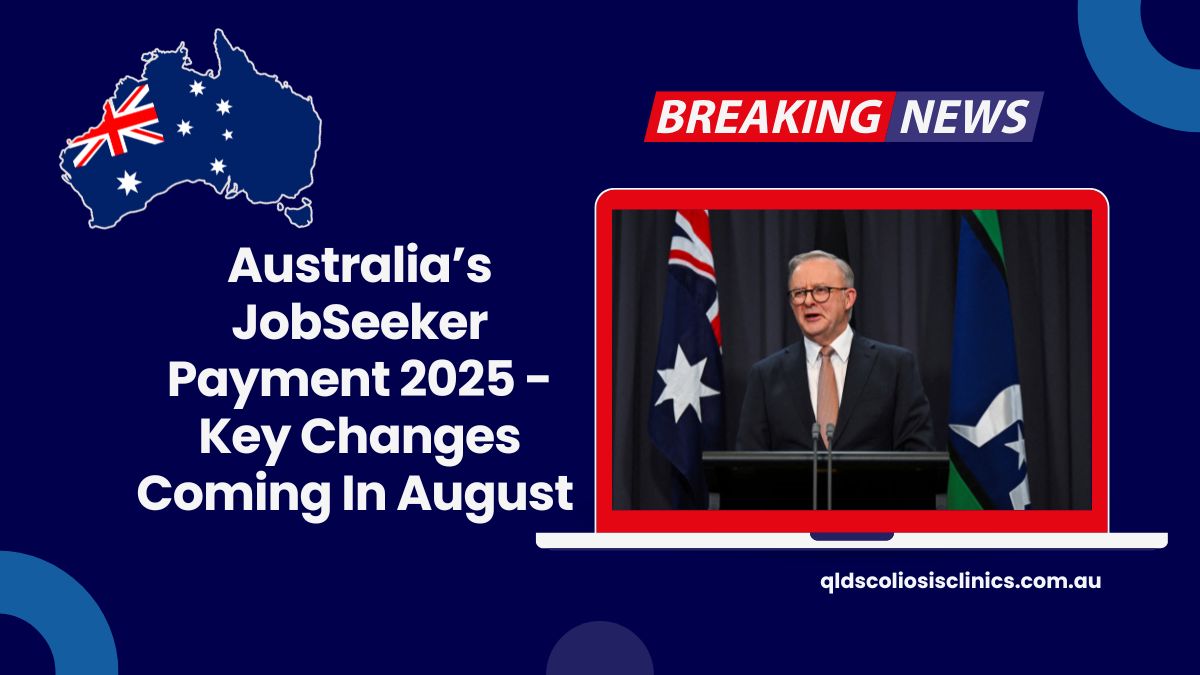From August 2025, thousands of Australians relying on welfare support will see a scheduled increase in the JobSeeker payment as part of the government’s biannual indexation process.
While advocates have called for more significant boosts, today’s changes reflect the official adjustments in response to inflation and cost of living pressures.
Here’s everything you need to know about these updates—and what it means for your household budget.
Breakdown of the New JobSeeker Rates (August 2025)
Centrelink adjusts the JobSeeker payment twice yearly, in March and September, to align with economic shifts. This August, the increase is modest, offering a small reprieve but still below advocacy targets.
| Recipient Type | Current Rate (from 20 Mar 2025) | New Rate (from Aug 2025) | Increase |
|---|---|---|---|
| Single, no children | $781.10 per fortnight | $789.90 | +$8.80 |
| Single, with dependent child(ren) | $836.50 | $845.80 | +$9.30 |
| Single, 55+ or partial capacity (<15hrs/week) | $836.50 | $845.80 | +$9.30 |
| Partnered (each) | $715.10 | $725.80 | +$10.70 |
Although the rate adjustments reflect CPI-based indexation, they significantly trail behind community calls for a $76 per day benchmark—a gap many say widens the affordability crisis.
Why JobSeeker Needs More Than Routine Indexing
Despite the uptick, inflationary pressures, especially in housing, food, transport, continue to outpace indexation. Rent increases in major cities, alongside spikes in food and utility costs, mean that the JobSeeker increase may feel like a relief rather than a recovery.
Advocacy groups argue that the increase fails to bring support to a livable threshold, especially for long-term claimants and older workers.
Related Centrelink Improvements: Digital & Service Updates
August also brings non-rate enhancements aimed at automation, accuracy, and efficiency:
- Faster claims processing via improved digital platforms and fraud detection.
- Pilot mutual obligation reforms for easier job reporting.
- Concerns remain, however, around diminished in‑person support—especially in rural and remote locations.
These changes suggest a shift toward self-service and digital-first welfare delivery, but also highlight the need for accessible alternatives.
How Australia Compares: International Welfare Context
When compared to countries like New Zealand and Canada, Australia’s JobSeeker rate remains among the lowest in its income replacement. New Zealand includes housing supplements while Canada offers higher replacement rates, reinforcing better support for the unemployed.
Despite policy intentions for JobSeeker to be transitional, many recipients stay on payments long-term—underscoring the insufficiency of the current system in meeting real-world living costs.
Is August 2025 Enough?
While the percentage increase helps cushion rising costs, it falls short of meaningful financial support. Recipients still face pressures from rent, utilities, and daily essentials that indexation alone cannot resolve.
Ongoing dialogue continues around deeper reforms, such as structural welfare redesign and improved rental support.
The August 2025 indexation offers a small but necessary increase in JobSeeker payments. It’s a step in the right direction, but doesn’t fundamentally resolve the cost-of-living crisis facing many Australians.
To truly alleviate hardship, deeper reforms are needed—such as structural welfare improvement, housing support, and wage bolstering.
In the meantime, recipients should:
- Expect small fortnightly rate increases,
- Be ready for streamlined digital service delivery,
- And continue to advocate for broader, more impactful adjustments.
FAQs
What is the new JobSeeker rate starting August 2025?
- Single (no children): $789.90 per fortnight (+$8.80)
- Single with dependents or 55+/partial capacity: $845.80 (+$9.30)
- Partnered: $725.80 each (+$10.70)
How often is JobSeeker reviewed?
- Rates are indexed twice a year: March and September based on inflation and cost-of-living metrics.
Are there any eligibility or digital changes?
- No rate changes to eligibility. However, digital enhancements include faster processing, improved fraud checks, and pilot reforms around mutual obligation reporting.
